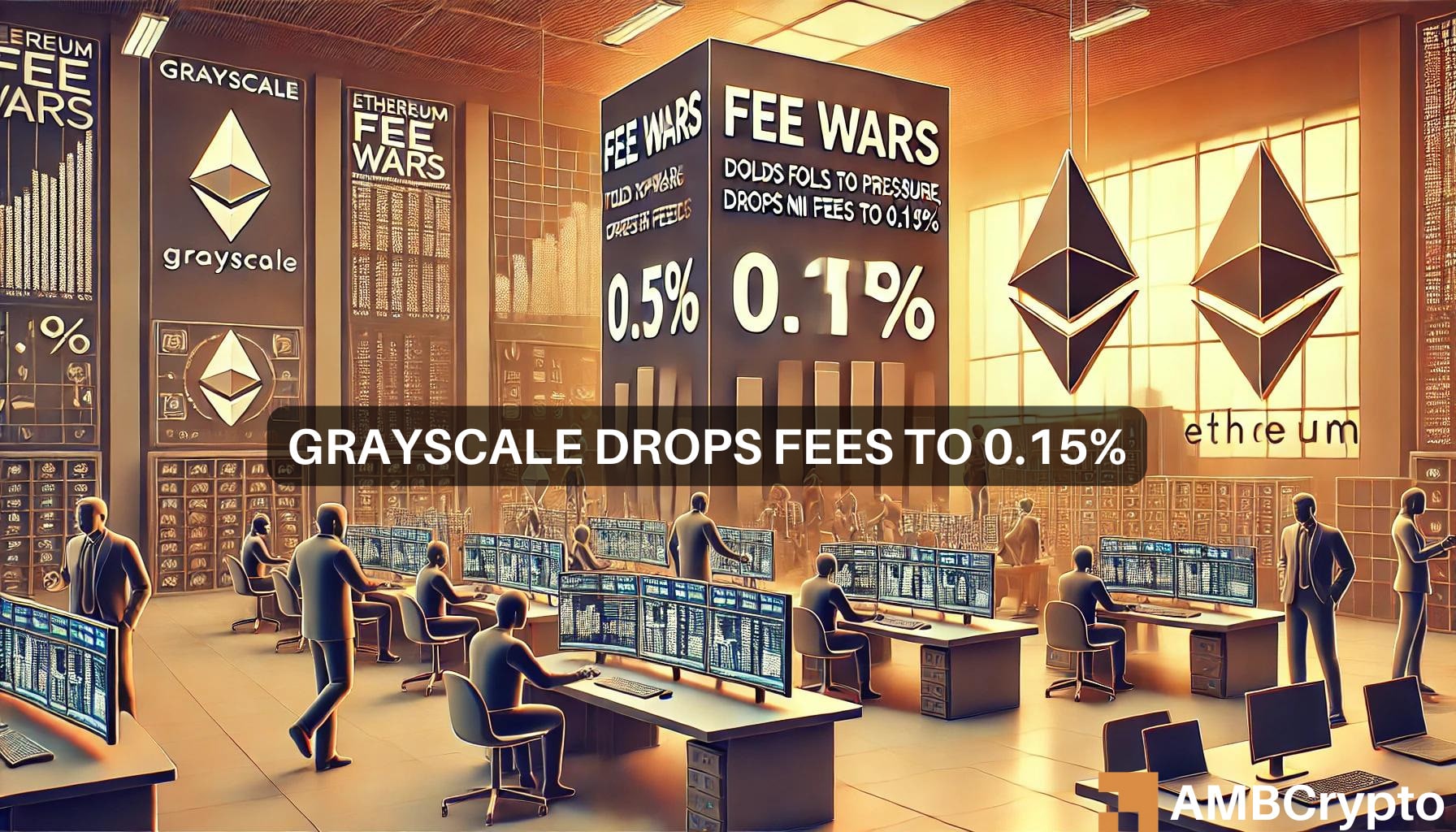Real Bitcoin Bull Run on Hold as Retail Interest at Three-Year Low
Retail interest in Bitcoin has hit a three-year low, and analysts are concerned about the need for a rebound to trigger a real bull run. Some other indicators, like Google search trends and unique active addresses, also show declining interest. Meanwhile, Bitcoin's hashrate has dropped to levels last seen in December of 2022, though experts downplay fears of a network collapse. Despite this market pessimism, BlackRock's Bitcoin ETF continues to attract impressive inflows.
Bitcoin Retail Demand Metrics at 3-Year Low
Retail interest in Bitcoin (BTC) has reached its lowest point in three years, and now, analysts are very concerned about the need for a rebound before the “real bull run” can begin. CryptoQuant founder Ki Young Ju pointed out that Bitcoin retail investor demand is at a three-year low.
He based his claim on the average monthly change in demand for Bitcoin among retail investors, which has fallen below negative 15% over the past 30 days. This metric is measured by the 30-day change in total transfer volume for transactions under $10,000.
While institutions typically execute larger Bitcoin transactions, many analysts and traders believe that major price rallies for Bitcoin still rely on surges in retail investor interest. CryptoQuant contributor Minkyu Woo explained that the real bull run usually begins with massive buying volume driven by retail investors, which has not been seen yet.
Despite this, VanEck CEO Jan van Eck mentioned in April that the majority of inflows into spot Bitcoin exchange-traded funds (ETFs) in the United States likely come from retail investors. He revealed that around 90% of the flows are retail, which was surprising to him.
However, spot Bitcoin ETF inflows in the United States dropped by 87% on July 17 compared to the previous day, totaling $53.3 million across all 11 tracked products. Bitcoin is also struggling to maintain a crucial support level necessary for moving into the next price bracket. On July 17, Bitcoin briefly reached $65,686 before retracing to $63,521, and it has not been able to pass this level since. Currently, Bitcoin is trading at $64,284 according to CoinMarketCap data.
Additionally, search interest for the term ”Bitcoin” has decreased by 44% over the past three months since the Bitcoin halving, and it is down almost 57% since Bitcoin reached its all-time high of $73,679 on Mar. 13, based on Google data. This indicator often spikes during major Bitcoin events and also provides some insight into general retail investor interest.
Bitcoin Hashrate Hits Lows Not Seen Since 2022
At the beginning of July, the Bitcoin network’s hashrate drawdown, which is a metric of relative changes in the network’s overall computing power, also sank to levels not seen since the December 2022 bear market. This suggests that some BTC miners are starting to capitulate.
In April, Bitcoin went through its fourth halving event at block height 840,000, cutting the reward miners receive per block found in half to 3.125 BTC, effectively halving their largest source of revenue. Miners do also receive rewards along with transaction fees when they find a new Bitcoin block, but data shows fees only account for less than 10% of revenues.
Bitcoin’s price also recently dropped below the $60,000 mark as selling pressure from the German government grew and the rehabilitation trustee for the defunct crypto exchange Mt. Gox started repaying creditors in both Bitcoin and Bitcoin Cash. The crypto king has since recovered to close to $65,000.
Oleksandr Lutskevych, founder and CEO of crypto exchange CEX.IO, pointed out these stats and noted that trends like Runes and Ordinals have “cooled significantly since their introduction.” On-chain activity on the Bitcoin network has also been either stagnant or declining for the better part of the last two years, which could mean hash is more centralized through larger mining operations, potentially leading to greater network instability during uncertain conditions.
Bitcoin Active Addresses (Source: Glassnode)
The decline in unique active addresses could be “a reflection of retail participants ceding ground to corporate entities,” which are entering the space at a growing pace thanks to the spot Bitcoin ETFs that were launched earlier this year. Despite these bearish conditions, Marathon Digital Holdings, the world’s largest BTC mining firm, didn’t sell a single Bitcoin in June, keeping its 18,536 coins untouched.
Bitcoin’s hashrate drawdown dropped to levels not seen since December 2022 after the collapse of FTX, when the price of Bitcoin hit an $18,000 low.
A spokesperson for Bitcoin mining pool operator ViaBTC noted that while hashrate dropped, its decline wasn’t as big as during the bear market, and its impact on the network and miners “is relatively minor.” Since the halving in April, the network’s hashrate has remained around 600 exahashes per second (EH/s), far above the 250 EH/s that was seen in December of 2022, which is a decent improvement in hashrate over time.
Brian Rudick, senior strategist at crypto trading firm and liquidity provider GSR, said that Bitcoin’s hashrate dropped as mining profitability went down after the halving, with hash price now “sitting at an all-time low.” He explained that public miners have continued to hold, as they generally have a lower all-in cost per coin than the network as a whole, and have shored up their balance sheets via debt repayment and at-the-money equity offerings before the halving. Less efficient, non-public miners are being forced to unplug unprofitable machines.
ViaBTC’s spokesperson confirmed that the hash price has “indeed seen a significant decrease.” After the Bitcoin halving, when BTC prices jumped along with a 140% increase in hashrate, the daily revenue per TH/s remained around $0.05. The recent price drop saw that figure drop to $0.04, a “new low in recent years.”
Despite these drops, experts dismissed fears of a so-called “miner death spiral,” a theoretical concept where the inverse relationship between miner rewards and energy requirements causes a network to collapse when incentives do not cover costs any more.
According to Lutskevych, a death spiral isn’t very likely because of Bitcoin’s built-in mining difficulty adjustment mechanism that reduces mining difficulty to encourage other miners when hashrate drops. ViaBTC added that the difficulty adjustment would increase rewards for those who kept on mining, potentially attracting new miners and achieving a “dynamic balance.”
Mining is a long-term investment endeavor, with strategies typically spanning extended periods rather than short-term durations. Lutskevych suggested that miner centralization could be a much bigger concern, as fluctuating risk appetites among dominant players may help explain the sudden drop in hashrate.
While the hashrate drop points to various factors, the network’s security remains assured. Historical data suggests Bitcoin’s price and hashrate are somewhat correlated, but Bitcoin’s price tends to lead hashrate.
On the bright side, the network’s security is not in any immediate danger, as bad actors would need to spend more than $1 million per hour to control 51% of the hashrate. Also, the recent hashrate decline may signal a potential bottom, supported by metrics like Bitcoin exchange reserves and miner reserves, indicating low selling pressure.
BlackRock’s BTC ETF Draws Millions Despite Market Pessimism
Despite the uncertainty about what is next for BTC, BlackRock’s spot Bitcoin ETF has continued to attract investments. The iShares Bitcoin Trust (IBIT) received another $107 million in inflows on July 18, making it the ninth consecutive day of positive inflows.
Over seven of these nine days, the ETF saw daily inflows of more than $100 million, which is a rare achievement in the industry, according to Thomas Fahrer, the co-founder of the crypto data platform Apollo.
Despite this influx, positive commentary on Bitcoin has sharply declined, and traders are increasingly shorting the asset, according to blockchain market intelligence firm Santiment. Positive Bitcoin mentions on social media have dropped to about a third of what they were four months ago.
Santiment measures social sentiment from platforms like Reddit, X, 4chan, and BitcoinTalk. Interestingly, there was a surge in ”buy the dip” mentions when Bitcoin fell towards its near-five-month low of $53,600 on July 5.
Despite the decrease in positive mentions, the Crypto Fear and Greed Index indicates that market sentiment is in the ”Greed” zone, with a score of 60 out of 100 This is a strong rebound from the ”Extreme Fear” zone of July 12 when the index dropped to its lowest since January of 2023 and reached 25 out of 100.





